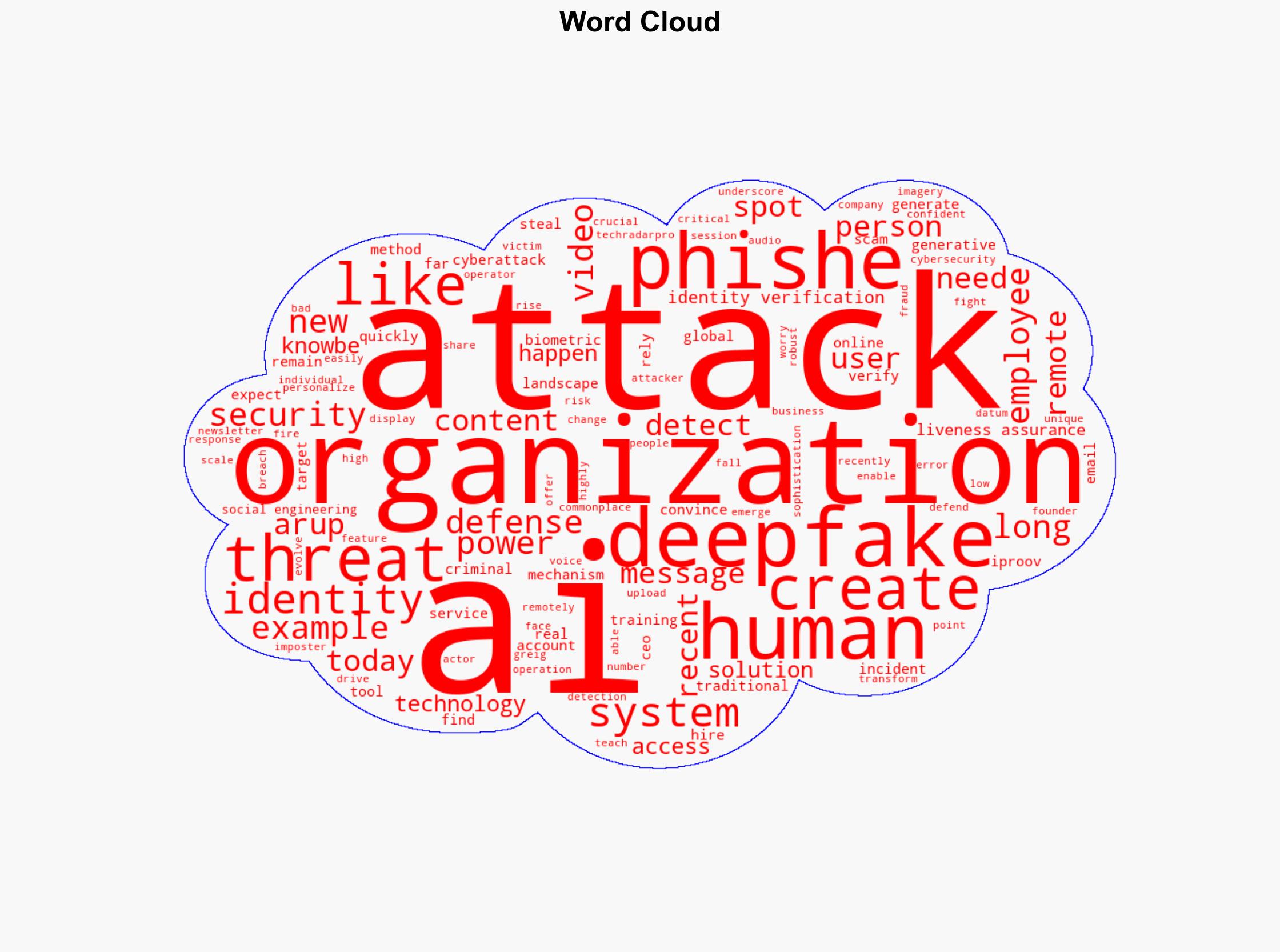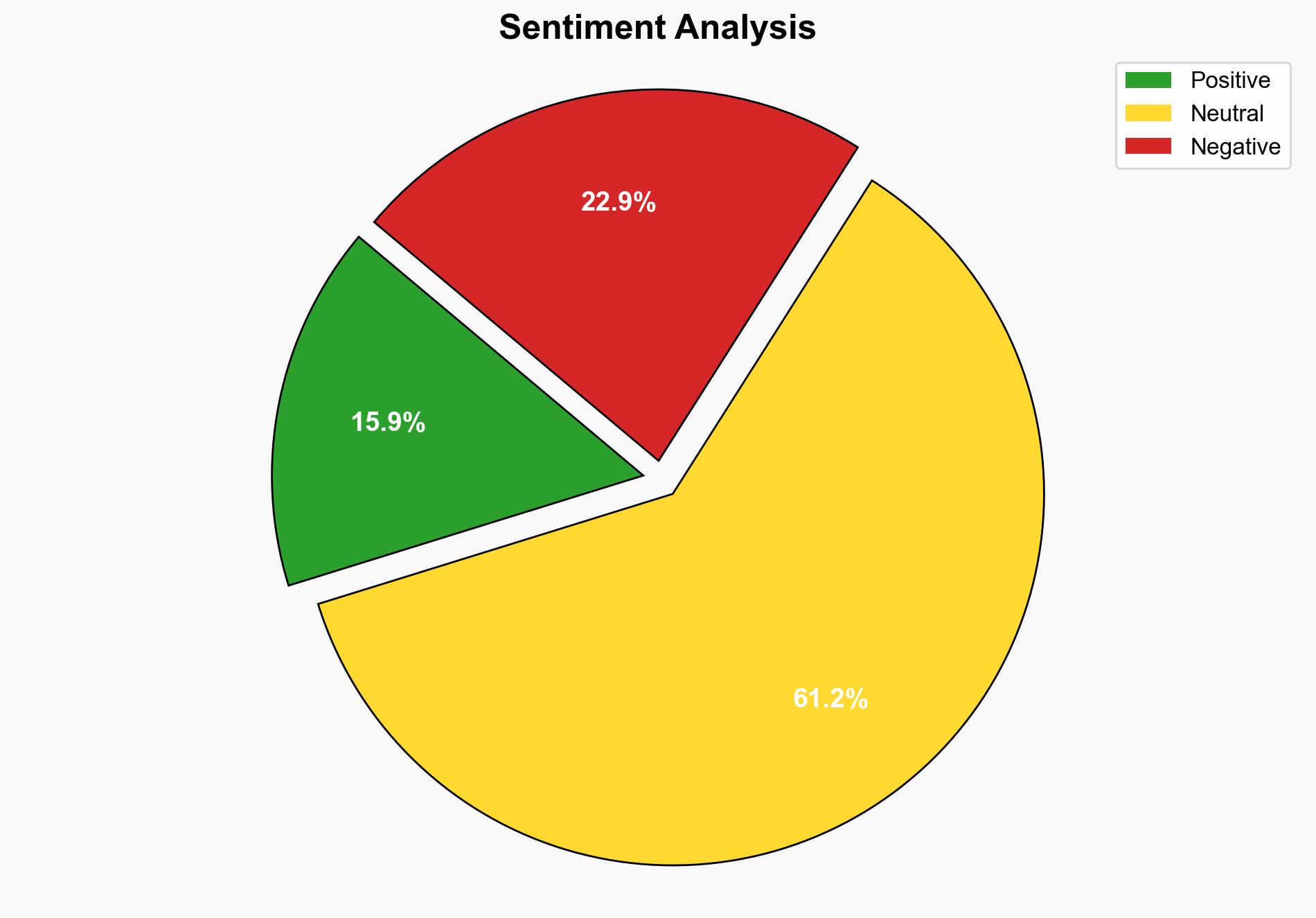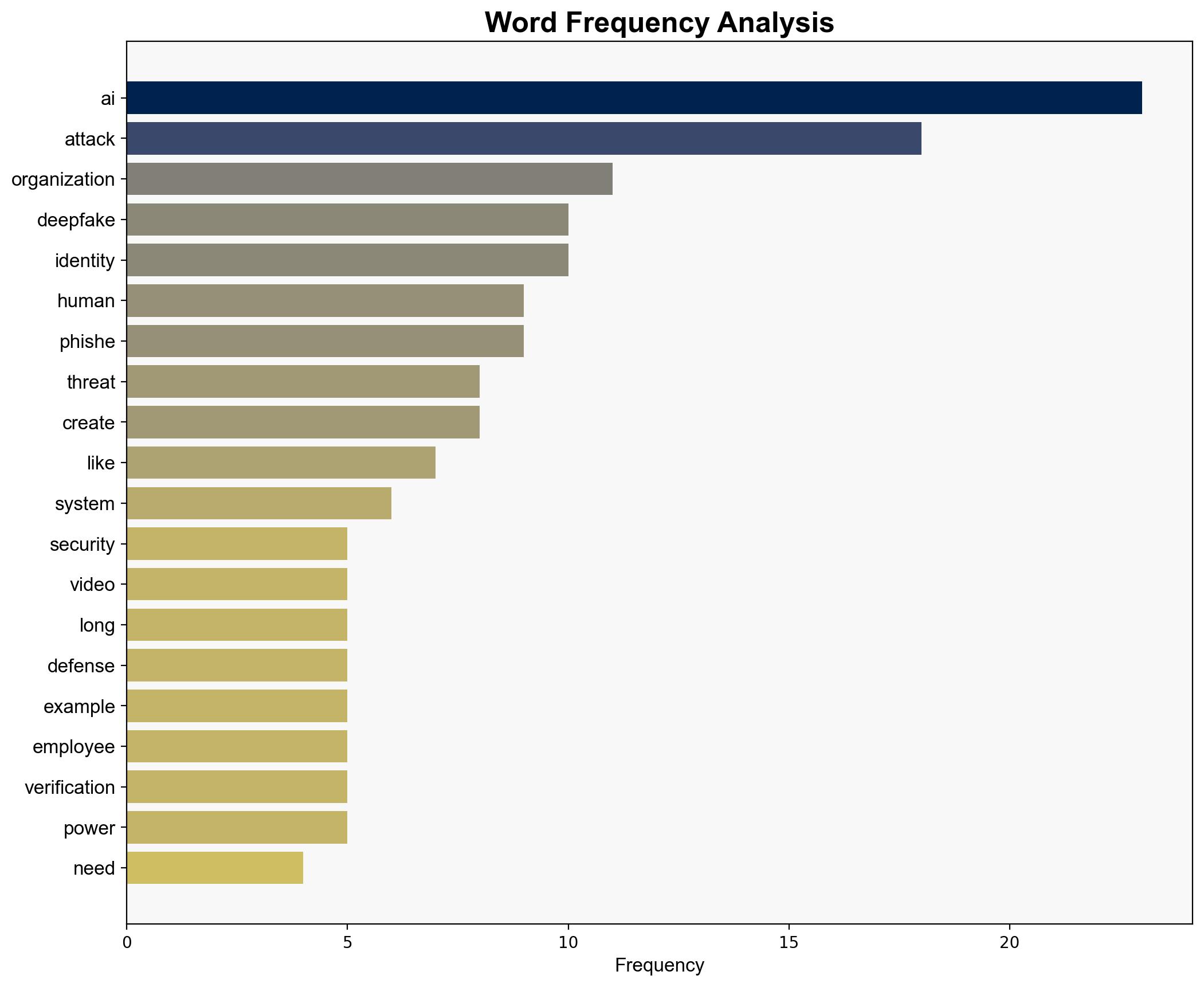The AI arms race why we need AI to fight AI attacks – TechRadar
Published on: 2025-06-12
Intelligence Report: The AI Arms Race – Why We Need AI to Fight AI Attacks
1. BLUF (Bottom Line Up Front)
The rapid advancement of AI technologies has significantly transformed the threat landscape, with AI-powered cyberattacks becoming increasingly sophisticated and difficult for humans to detect. The reliance on traditional human-centric security measures is proving inadequate. To counter these evolving threats, it is imperative to integrate AI-driven defense mechanisms. Key recommendations include enhancing AI-based detection systems and increasing awareness and training on AI-generated threats.
2. Detailed Analysis
The following structured analytic techniques have been applied to ensure methodological consistency:
Adversarial Threat Simulation
Simulations indicate that AI can be used to create highly convincing phishing emails and deepfake content, making traditional detection methods obsolete. Organizations must anticipate these tactics to strengthen their defenses.
Indicators Development
Developing indicators for AI-generated anomalies is crucial. This includes monitoring for unusual patterns in communications and transactions that could signify an AI-driven attack.
Bayesian Scenario Modeling
Probabilistic models suggest a high likelihood of increased AI-powered attacks, necessitating proactive measures to predict and mitigate potential pathways of cyber intrusions.
3. Implications and Strategic Risks
The integration of AI in cyberattacks poses significant risks across multiple domains. Politically, it could lead to misinformation campaigns. Economically, businesses face financial losses from fraud and identity theft. The military sector risks unauthorized access to sensitive data. These threats could trigger cascading effects, undermining trust in digital systems and causing widespread disruption.
4. Recommendations and Outlook
- Invest in AI-driven cybersecurity tools to detect and neutralize AI-based threats in real-time.
- Enhance training programs to include AI threat awareness and response strategies.
- Best Case: Organizations successfully integrate AI defenses, reducing the impact of AI-driven attacks.
- Worst Case: Failure to adapt leads to significant breaches and loss of sensitive information.
- Most Likely: A gradual increase in AI adoption for defense, with ongoing challenges in keeping pace with threat evolution.
5. Key Individuals and Entities
Rob Greig, a notable figure in the context of AI-driven cyber threats, highlights the increasing sophistication of attacks.
6. Thematic Tags
national security threats, cybersecurity, AI defense, deepfake, phishing, cyber resilience




